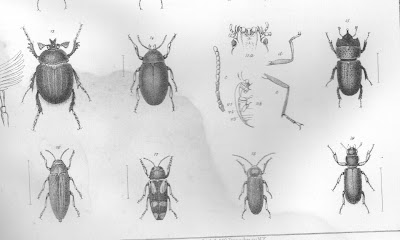 |
| Decades Of Wear And Tear And Needing Repair |
Fix It Or Nix It
Even as concepts like “slow food,” “artisan foods,” “sustainable foods,” and other similar concepts gain in popularity, the lack of processing and production facilities for specialty foods, mostly from crops and animals produced on small farms, is increasingly seen as a national agricultural crisis.
Also bemoaned by many is the ever-increasing loss of heritage structures; the great old homes and barns that, in days gone by, dotted the American landscape.
In the small village of Acme, located in rural Whatcom County, Washington, Acme Valley Foods, a company dedicated to locally grown foods processed locally has addressed both the lack of processing facilities for the specialty products it brings to the market and the issue of preserving heritage structures.
Recognized as a “Centennial Farm” By Washington State in 1989, the Stephens/Dickey Farm at Acme was founded in 1884. In 1927 a barn complex was constructed to support dairy and other farming operations on the 150 plus acres just north of town.
When the founders of Acme Valley Foods acquired the Stephens/Dickey farm in 2011, the old barn was fast approaching the day when the historic structure would either come crashing down or, have to be taken down for safety. Acme Valley management decided neither option was acceptable. According to Dave Green, president of the firm, “People just don’t build these types of barns anymore. We felt the barn represented a heritage that really shouldn’t be lost.”
 |
| Nearing Completion |
"A Heritage That Really Shouldn't Be Lost"
Saving the barn and all the history the structure represents was a concept that fits into Acme Valley’s approach to doing business. According to Green, “Acme Valley Foods feels very strongly about the importance of locally grown and processed food. We have made significant investments in building production capability locally that allows us to provide real local jobs and great local food.” Combining the need for production facilities with the opportunity to preserve a heritage barn seemed a logical approach to the company’s management team.
As a company, Acme Valley Farms is relatively new to Whatcom County. Established in 2013, the company is already making its mark on the rural economy. Employing 25 people the firm represents, Dave says, “A group of artisan food producers working together to provide great local food. We currently produce alpine style soft cheeses, under the Acme Farms label, fresh, cured and smoked meats under the Jack Mountain Meats label, Ice Cream under the Acme Ice Cream label, and Granola under the Chuckanut Crunch label. We are in the planning stages of building out a local Bakery operation that will also be located in Acme.”
According to Dave, his firm purchases milk for both the company’s cheese and its ice cream business from Edaleen Dairy, an independent dairy operation located in Lynden, Washington, just a few miles north of Acme.”
Local Lumber Milled On Site Is A Key To The Job
Work on the renovation necessary to preserve, recycle and reuse the Stephen’s/Dickey dairy buildings began with a reconstruction of the farm’s creamery building. Sticking to an environmental ethic, Pearson Construction of Bellingham, Washington, Whatcom County’s county seat, was selected to do the work, in part because the company owns a Wood-Mizer thin kerf portable band sawmill.
 |
| Milling Lumber For The Restoration |
Thin kerf, portable band sawmills are widely recognized for the environmental enhancements they bring to the forest industry as well as the opportunities they provide firms like Pearson Construction to offer a superior product to customers.
“Our Wood-Mizer allows us to use construction techniques almost identical to those used when the barn was built nearly 90 years ago,” Larry Pederson, president and owner of the firm explains. “We can support our local loggers by milling our own wood, be environmentally sensitive, and end up with a final product that is nearly identical to the original barn.”
Thin kerf sawmills provide for environmental enhancements because the very thin blade they utilize means less sawdust so up to 30% more lumber results when a log is milled meaning more carbon is sequestered for the life of the lumber. Also, just as was the case when the Stephen’s barn was built, “waste” wood can be cut up and used for battens.
Cost reductions come because the sawmill can, at the touch of a button, be set to mill specialty sizes.
In a world where food security based on locally grown and processed foods is coming to be seen as an important sustainability issue for the small farm, Acme Valley Foods has set a high standard others might look to. The firm’s barn restoration in Acme demonstrates that sustainability is more than just a buzzword. Sustainability is a heritage barn restored, recycled, and reused utilizing environmentally sensitive lumber production techniques to house a rapidly growing, farm based, company providing local jobs based on locally grown and processed foods.









